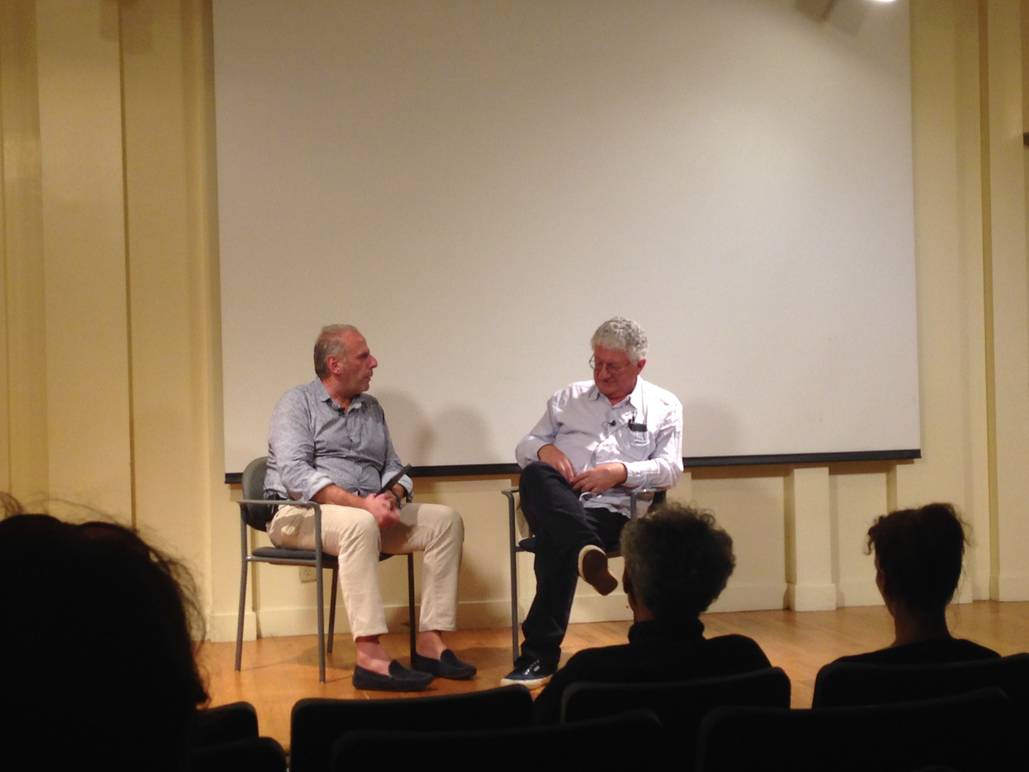Mimmo Roselli on Display at Casa Italiana (NYU)
On September 20, at the Casa Italiana Zerilli-Marimò, Mimmo Roselli, an Italian artist, presented an exhibition entitled “NYC,” featuring watercolors, a sculpture-installation, and oil paintings. The event also included a presentation of two short films and an interview with Roselli, conducted by Stefano Albertini, Director of Casa Italiana.
Born in Rome and raised in Florence, Roselli was originally a physician before pursuing a fulltime career as an international artist. The theme of this exhibit revolves around the concept of space and borders. With the repetition of lines throughout his pieces, he emphasizes the importance of crossing boundaries and trespassing into new terrains.
To Roselli, lines are an allegory for a personal passage in life. They always leave a mark, but they also represent being present in your daily thoughts and actions. “Sometimes we look to the future too much, and we escape our responsibilities because we are not in the present,” he explains.
His series of 130 watercolors on 8.6” x 5.9” pieces of paper called, “NYC, the Gentle Giant,” were delicately pinned to the wall in loosely organized columns and rows. Each work contains engrained lines that embody the painted organic shape in varying shades of its monochromatic hue, including purple, pink, green, and orange.
With the site-specific sculpture installation, “From Here to Here,” Roselli uses Sarah’s Garden as his canvas and “cuts the space” with ropes. It illustrates the idea that lines go in different directions, yet always return to the same place—the first time he conveys this idea.
He also portrays this in his five oil on canvases, which all similarly depict curved black lines engraved on the surface, resembling the physical wires in the garden.
In fact, in the short film, “Mimmo Roselli at 55 Venice Bienalle 2013,” Ewald Stastny, the museum’s Artistic Director, describes that his work was selected because his ideology correlates to the history of Venice. The wires and the lines are a metaphor for “coming and going,” symbolic of the historic Venetian port city. With this display, his canvases are inside and his wires are outside to demonstrate that the world is limitless and should be explored.
The documentary, “Gironi di Santa Rosa,” shows a different side of Roselli’s work. During his time as a physician in the ‘80s, a Franciscan Monk approached Roselli to provide medical care to members of a village in southeast Bolivia. He originally served three months annually as a physician and researcher, but was inspired not only to better educate the people, but to also have them express their culture through art.
In 2007, Roselli built a middle school and high school for artists and young local students to achieve just that. The documentary explains the month-long Santa Rosa festival, which showcases the student’s work to the town, including theater pieces, sculptures, and portraits.
In the interview that followed, Roselli reveals that the school is flourishing with both permanent and visiting staff. He goes on to explain that the poverty present in Bolivia is apparent in his work, which he describes as “mere lines on a canvas.” He believes that art needs to be approached in this pure way because you can do less with more, and the less you use the more powerful a message can be. This is why he encourages his students to use simple materials sourced locally, once again highlighting the significance of space.







































i-Italy
Facebook
Google+
This work may not be reproduced, in whole or in part, without prior written permission.
Questo lavoro non può essere riprodotto, in tutto o in parte, senza permesso scritto.